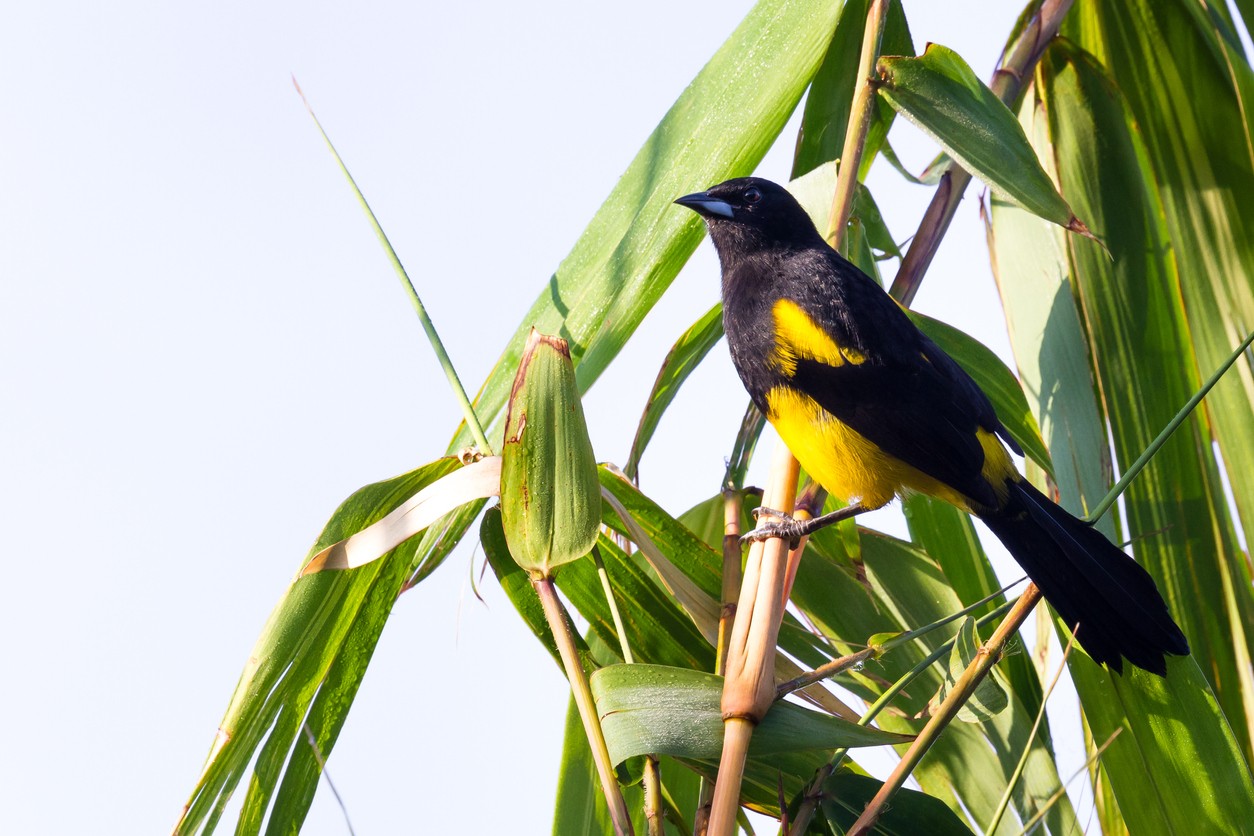Black-cowled Oriole
A species of New world orioles Scientific name : Icterus prosthemelas Genus : New world orioles
Black-cowled Oriole, A species of New world orioles
Botanical name: Icterus prosthemelas
Genus: New world orioles
Content
Description General Info

Description
The black-cowled oriole is a medium-sized passerine, ranging in length from 18.5 to 21 cm (7.3 to 8.3 in). Males are larger and heavier than females, averaging 32.5 g (1.15 oz) while females average only 27.5 g (0.97 oz). In the north of the range, males and females are sexually dimorphic, while in the south, their plumages are similar. In both sexes, the bill is slender, slightly decurved, and black, with a silvery base to the lower mandible. The adult male's plumage is mostly black, with bright yellow patches on the shoulder, rump, and uppertail coverts. The wing lining, lower breast, thighs, and crissum are completely yellow, with a narrow wash of chestnut between the black and yellow on the breast. Where the female's plumage differs, she has a black face, throat and upper breast, with an olive-yellow crown and upperparts. Some females, particularly further south in the range, show a mix of black and yellow feathers on the head and back, while others have entirely black heads, and still others fully resemble males. Both sexes have blue-gray legs and feet, and brown eyes. The immature of I. p. praecox is dull yellow-olive above and dull yellow below; the feathers on its back have black bases, which sometimes show through. Its face, forehead and throat are matte black, as are its wings and tail. This plumage is retained for a year, though individual, heavily worn, feathers may be replaced. 
Size
21 cm
Nest Placement
Tree
Feeding Habits
Black-cowled Oriole predominantly feeds on arthropods, fruits, and nectar. Black-cowled Oriole's foraging behavior includes searching within foliage and occasionally catching prey mid-air. A unique preference is for certain fruits, along with specialized techniques to access nectar.
Habitat
Black-cowled Oriole typically inhabits lush environments, thriving at the margins of humid forests and along watercourses within riparian woods. These birds are also commonly seen in mature secondary forests, indicating their preference for partly regrown woodlands. Agriculturally altered landscapes, such as banana plantations and palm groves, also form part of their habitat in more open areas. Geographically, black-cowled Oriole is prevalent in broader neotropical regions ranging from the lowlands up to elevations of approximately 700 meters, occasionally venturing up to 1000 meters in altitude.
Dite type
Frugivorous
General Info
Feeding Habits
Bird food type

Fruit
Behavior
The black-cowled oriole is a resident species. It doesn't migrate, and has not been reliably recorded anywhere as a vagrant. It typically moves in pairs or small groups, and often accompanies mixed-species flocks. It mixes regularly with other oriole species. It roosts in loose groups in tall grass, and youngsters sometimes travel together in flocks. 
Distribution Area
The black-cowled oriole occurs throughout much of eastern Central America, from southern Mexico through western Panama. It lives in the Caribbean lowlands and foothills at elevations from sea level to 1,300 m (4,300 ft), though primarily below 500 m (1,600 ft). It is fairly common across its range. In the early 21st century, it expanded its range to the Pacific slope of Costa Rica, with scattered reports of sightings in the central and southern lowlands. It is found in humid and semihumid forest, including in clearings and along edges, as well as in more open areas with scattered bushes and trees. In forested areas, it is generally located along waterways. It favors open woodland and plantations, especially banana plantations, and is regularly associated with palms. In the southern part of its range, it prefers more open habitats, including gardens, forest edges, and second growth. 
Species Status
Not globally threatened.


Scientific Classification
Phylum
Chordates Class
Birds Order
Perching birds Genus
New world orioles Species
Black-cowled Oriole